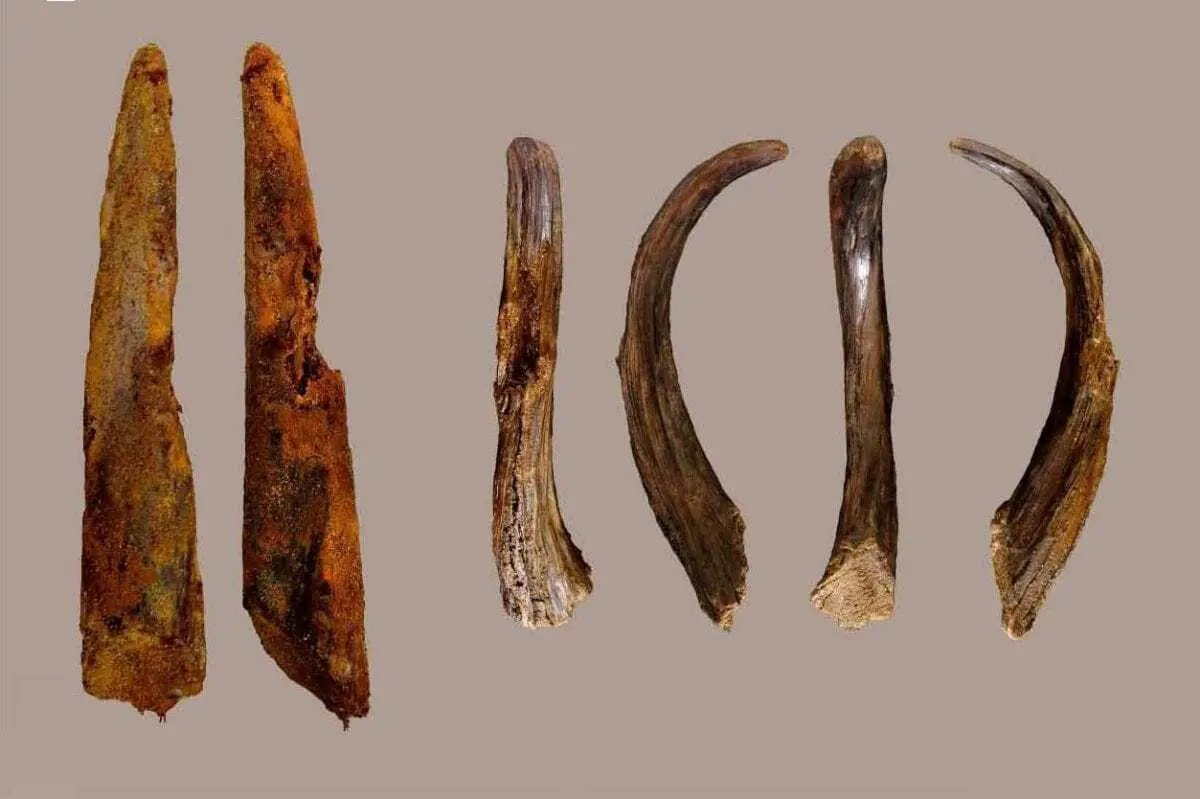Archaeological excavations at Aranbaltza site in the Basque Country coast (Northern Spain), have revealed several episodes of neandertal occupations with preserved wooden remains.
The fieldwork is leaded by Joseba Rios-Garaizar, archaeologist from the Spanish Centro Nacional de Investigación sobre la Evolución Humana (CENIEH). In 2015, the excavation revealed two wooden tools very well preserved, and one of them is a 15 cm long digging stick which has been published in the journal PLOS ONE.
The detailed analysis of this tool and the Luminescence dating of the sediment that bears the wooden remains indicate that the objects were deposited around 90.000 years and thus, they were made by neandertals.
The Micro-CT analysis and a close examination of the surface developed at CENIEH laboratories have shown that a yew trunk was cut longitudinally into two halves. One of this halves was scraped with a stone-tool, and treated with fire to harden it and to facilitate the scraping to obtain a pointed morphology. Use-wear analysis revealed that it was used for digging in search of food, flint, or simply to make holes in the ground.
The preservation of wooden tools associated to neandertals is very rare because wood degrades very quickly. Only in very specific environments, like the waterlogged sediments from Aranbaltza, it has been possible to find evidence of wooden technology. As it was suggested by indirect evidence, this type of technology was relevant in neandertal daily life.
In the Iberian Peninsula wooden tools associated to neandertals have been found only in the travertine from Abric Romaní (Catalonia), and in the rest of Europe only four sites (Clacton on Sea, Schöningen, Lehringen and Poggeti Vechi) have provided wooden tools associated to neandertals or pre-neandertals. Therefore, findings like the one from Aranbaltza are crucial to investigate the neandertal technology and use of wood.
The archaeological project at Aranbaltza started in 2013 to investigate the last neandertals from Western Europe, who were responsible of the Chatelperronian culture. The ongoing excavations have revealed different neandertal occupation events spanning from 100 to 44.000 years. This makes of Aranbaltza an exceptional site to investigate neandertal evolution and behavioral variability.
This project is coordinated by the CENIEH and INRAP and funded by Heritage Center of the Bizkaia Regional Government (2013-2017) and Basque Government (2014-2015). Researchers from the following institutions have participated in this publication: CENIEH, Universidad Autónoma de Barcelona, Universidad de Burgos, INRAP, Universidad del País Vasco and Universidad de Cantabria.
Header Image Credit : Neandertal wooden tools/Joseba Rios





